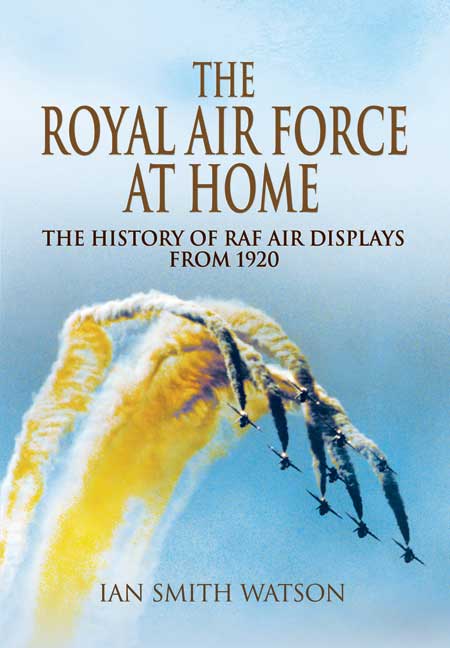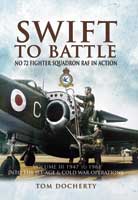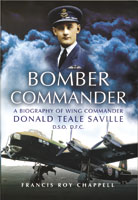The Royal Air Force At Home (Hardback)
The History of RAF Air Displays from 1920
Imprint: Pen & Sword Aviation
Pages: 352
ISBN: 9781848841574
Published: 18th February 2010
Last Released: 7th June 2010
(click here for international delivery rates)
Order within the next 5 hours, 21 minutes to get your order processed the next working day!
Need a currency converter? Check XE.com for live rates
| Other formats available - Buy the Hardback and get the eBook for free! | Price |
|---|---|
| The Royal Air Force At Home ePub (12.3 MB) Add to Basket | £6.99 |
Military public relations endeavours ultimately seek to build a sense of common interests and aims, and so generally foster good relations with the people they defend, and there in ensure a stable society. The armed forces when engaging on any public relations exercise, have traditionally sought to provide an entertaining spectacle. For years this has been typified by parades, bands, mock battles, drill displays and other relevant feats of military prowess which have captured the imagination of the public and inspired potential recruits.
The 20th Century brought a new dimension to the field of warfare and subsequently added a new strand to the fabric of public ceremony and displays by the armed forces. That new dimension was the arrival of powered flight. Display flying began within five years of the Wright Brothers making their milestone first flight. The first events staged in Britain which centred on demonstrations by flying machines, were organised by the town councils of Blackpool and Doncaster and were held within days of each other in October 1909.
1920 was the year that the first of the famed and legendary Hendon Air Pageants was staged, and this is where military air shows traditionally began. The Hendon Displays were organised and staged by the still fledging Royal Air Force and it was probably due in no small part to the prestige and spectacle of this fresh new dimension of military pageantry, together with other like events held at RAF airfields through the next two decades, that the very existence of the RAF was saved from the threat of abolition.
The history of the RAF's commitment (one that compares almost uniquely with other air forces) toward display flying through the years after World War Two has now come of age. This account of their record in this often overlooked but then again traditional field of military customs, describes and illustrates the major public RAF events since 1920.
In democracies the military is usually financed by the public in the form of taxation. Few people like to pay taxes, especially if the money goes towards something abstract or, in the case of military spending, something morally dubious. To make the pill a little sweeter for Joe Public, the military puts on its public relations hat and attempts to explain, if not itself, than at least its gear and operations. From mock battles to parades and open houses to fly-bys, even bands and drill teams, a rousing display of colorful pageantry seeks to foster unity of purpose (not to mention motivate potential recruits). But—there’s more to it. Events that have a ceremonial or commemorative dimension also remind the public that the freedoms it enjoys come at a price, namely that of a service member’s individual sacrifice.
Speedreaders
This book provides a detailed account and illustration of the RAF's major public events since records began in 1920, following the first staging of the Hendon Air Pageants. The armed forces have always found benefit in their provision of what could be described as somewhat of an entertainment show of sorts, in that their efforts often gave (and still do give) inspiration to those who witness(ed) the events, and so often triggered the imagination of potential recruits. Military air shows traditionally stemmed from, and flourished, within five years of the first flight of the Wright Brothers; although, the possibility of the demise of the RAF was also once a stark possibility preceding WWII, though the ever-determined and overtly prestigious displays provided such an exhilarating new portrayal of the military that it was to subsequently save their force. A factual and interesting read, which would most suit readers interested in military history or aviation.
Phil T
Display flying is perhaps the most spectacular and popular way in which the modern military entertains the general public and forges good relations with the civilians they protect. This follows on from a tradition that began with the staging of such events and spectacles as mock battles, parades, band performances and drill displays. The birth of the military air show happened in 1920 with the first of the many famous Hendon Air Pageants. Organised by the newly-formed RAF, this original and entertaining book reveals the surprising fact that the RAF itself might have been abolished before Word War II were it not for the prestige of these, and other similar, displays. The author has obviously long fostered a passion for the RAF's shows. The idea for this book has been at the back of his mind ever since he first watched the 1962 Battle of Britain display, wide-eyed, from the shoulders of his father as a small boy. He went on to join the RAF himself in 1977. This intriguing history of the RAF's nearly century-long commitment toward display flying is an enlightening account of an area of military custom that has been sadly neglected until now. It is an exhilarating read, lavishly illustrated and an essential addition to the library of any aviation fan. It also stands out in presenting the history of the RAF from a rather different and interesting perspective compared to other accounts.
Lisa
An unusual book on the Royal Air Force Displays and how they have been organised over the years from 1920 until they were cancelled just before the outbreak of World War Two.
Aeromilitaria, Winter 2010
The background of the decisions to hold such 'Pagents' covers a wide variety of opinions from the Air Ministry from Trenchard down. Committees decided what to show, always with safety in mind. Accidents were not good publicity. However, the response was huge and vast numbers of cars converged on Hendon.
Post-war, the 'At Home' day was instituted and large numbers of stations and airfields opened their gates to the local populace every year. Although there were many RAF stations, attendance was low at many as the crowd appeal of a cookery school as hit by the fighter station several miles away.
The change to 'Battle of Britain Days' established a pattern whereby stations exchanged aircraft to provide a variety of types at each venue and a contrasting air display. Despite the title, USAF aircraft were welcome guests at each and visitors arrived from Nato air forces.
Tables are given of attendees from 1965 at the more important stations. These have naturally shrunk in numbers as units were disbanded and airfields closed down.
The result is a combination of policy and sight-seeing information with an insight into the organisation required and the problems that resulted. It opens up the many problems of the work that every display required from its resident airmen and is a very interesting mixture of facts.
Overall this is well written and clearly very well researched book that should be of great value to anyone with an interest in air shows.
History of War
















